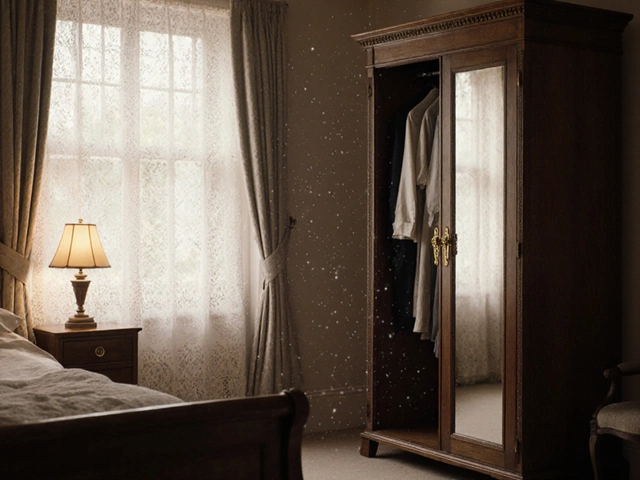Sofa beds, a staple in many households, offer the versatility of seating and sleeping space in one piece of furniture. However, they are not immune to the wear and tear of daily use, particularly the threat of sagging. While a sagging sofa bed can be a nuisance, rest assured, there are ways to tackle this issue head-on.
Before delving into solutions, it's helpful to understand why sagging occurs in the first place. Factors like frequent use, the quality of materials, and structural design all contribute to the dreaded droop. By addressing these elements, you can prolong the life of your sofa bed, maintaining it as a comfortable and stylish feature in your home.
- Understanding the Causes of Sagging
- Reinforcement and Repair Techniques
- Effective Maintenance Routines
- Choosing Quality Materials
- Innovative Solutions and Hacks
Understanding the Causes of Sagging
Sofa beds are remarkable for their dual functionality, but they often encounter the problem of sagging, primarily due to various stressors and frequent use. Understanding these causes is key to preventing and addressing sagging effectively. One major factor is the quality of materials used in the construction of the sofa bed. Lower-grade materials, often used to cut costs, may initially seem adequate but can quickly degrade, losing elasticity and strength over time. The metal or wooden frames that form the backbone of these structures can also weaken, especially if they're thin or not properly reinforced. The springs, integral for providing support, can wear out or break, causing the surface to dip and lose its firm feel.
A survey conducted by the Furniture Industry Research Association highlights that more than 60% of furniture issues, including sagging, are attributed to material fatigue. Frequent shifts between seating and sleeping positions also apply stress that wears on the sofa bed's components. As users move from sitting to lying down positions, the bed undergoes dynamic stress, which is taxing on the joint areas of the frame. Additionally, neglecting routine maintenance activities, such as regular cleaning and weight distribution checks, often accelerates wear and tear.
Environmental factors also play a significant role in exacerbating sagging. Changes in temperature and humidity levels within a home can affect the materials that make up a sofa bed. Wood may absorb moisture and swell, while metal parts could rust, especially if they're not treated with protective coatings. Bringing these issues to light, it becomes apparent that the root causes of sagging primarily rest on material quality, frequency of use, and environmental conditions.
"The longevity of any piece of furniture is predicated on the quality of its materials," states the Design Institute of Engineer Products. "Properly maintained, a quality sofa bed can serve reliably for 10-15 years."
Addressing the sagging invariably involves considering these factors. Adopting preventative strategies by investing in high-quality materials initially and maintaining the sofa bed appropriately can save you from future sagging woes. Understanding the causes not only helps in choosing the right product during purchase but also guides in maintenance practices that prolong sofa bed durability.
Reinforcement and Repair Techniques
When it comes to stopping your sofa bed from sagging, one of the most effective approaches is to look into reinforcement and repair techniques. Given the unique construction of sofa beds, they are prone to different kinds of wear compared to traditional sofas. The first step in reinforcing your sofa bed is to examine its basic structure. Most often, the frame might need tightening or reinforcing. Wooden frames can suffer from loose joints or screws, which, when corrected, add a substantial amount of rigidity and prevent sagging.
Reinforcements can come in many forms, starting with inserting new beams or support slats under the bed portion. These slats act like structural 'backbone,' helping distribute weight more evenly and preventing sag. In cases where the mattress itself is the culprit, consider integrating a new support layer. A commonly used fix is placing a thin piece of plywood beneath the mattress. This not only provides immediate reinforcement but can also smooth out any unevenness.
"A quick fix I often suggest is using additional fabric or foam inserts," says furniture expert, Jillian Morris. "These inserts can fill gaps caused by sagging and give instant firmness."
For those handy with tools, adding steel corner brackets can bolster the longevity and robustness of a sofa bed. These brackets can easily be attached to the existing corners of the frame, and they help by providing better support against the lateral stresses induced by weight and movement. Such braces are incredibly useful if you notice the side frames are giving way, a common issue in older models. Moreover, if your sofa bed has a pull-out mechanism, ensure that all its links and hinges are well-oiled and free from rust. This regular maintenance trick correlates directly with how sturdy the overall structure feels.
Time for some more advanced reinforcement strategies: Another compelling method is to address the upholstery by replacing the cushions or adding a layer of high-resilience foam. High-resilience foam maintains its shape considerably longer and can support weight much more efficiently than standard foam. Sewing in additional fabric patches where the original material has thinned or stretched can also reinforce the upholstery, making it less prone to deep sagging.
Addition of Supportive Elements
In this regard, don't overlook installing custom support elements like adjustable bed risers or sofa savers. These tools can be charmingly effective. If you're interested in revamping the entire sofa bed structure, some even opt to replace the whole mechanism with a more modern, more robust one that can support today's mattress designs. This might feel like a major overhaul but could significantly improve longevity and comfort.A simple yet crucial point often forgotten is to switch up your routine – rotating and flipping the mattress and cushions. This practice prevents the formation of permanent impressions, keeping the overall shape intact for longer. By employing these reinforcements and paying close attention to your sofa bed's components, you can extend its life and maintain that all-important comfort level.

Effective Maintenance Routines
Keeping your sofa bed in top-notch condition requires a few dedicated maintenance routines, much like any well-loved upholstery in your home. To start, consider the way the bed is used daily or weekly. Regular rotation of the seating and sleeping cushions can significantly mitigate wear patterns that lead to sagging. By redistributing weight more evenly across the surface, you extend the life of the furniture.
Vacuuming the sofa bed regularly is another crucial step. Dust and debris tend to settle into fabrics and joints, subtly undermining the material's integrity over time. A good vacuuming reaches into crevices and eliminates potential hazards, keeping your sofa bed maintenance game strong. Additionally, addressing spills immediately prevents stains and material degradation, which can ultimately contribute to the fabric losing its elasticity and sagging.
Experts recommend tightening any visible bolts and screws at least every few months, as this will ensure the frame remains stable and supportive. Loose hardware can lead to misalignment and unnecessary stress on the frame, which in turn affects the overall condition of the sofa bed.
"Simple maintenance routines go a long way in extending the life of your furniture," affirms home improvement expert Jane Meyers. "Consistency is key to preserving both appearance and functionality."
The choice of cleaning products for your sofa bed is equally important. Always opt for cleaning solutions that are appropriate for the specific material of your sofa. Test a small, inconspicuous area first to ensure there is no discoloration or damage. This careful approach goes a long way in keeping the fabric vibrant and robust.
Moving your sofa bed periodically is also a good practice. Shifting it across different areas of your living space reduces the risk of prolonged exposure to sunlight, which can weaken fabric fibers, causing them to sag and lose their original texture. Repositioning your sofa bed also encourages airflow beneath it, reducing the likelihood of moisture buildup—a common culprit in fabric discoloration and sagging.
Finally, consider the climate in which the sofa bed resides. Humid conditions can wreak havoc on materials, leading to mildew and mold, while overly dry environments may cause materials to become brittle. A dehumidifier or humidifier helps strike a balance, preserving the materials at their optimal state.
Choosing Quality Materials
When it comes to selecting materials for your sofa bed, the choices you make can significantly influence its durability and comfort, preventing it from sagging. A common mistake many make is opting for cheaper materials without considering the long-term effects. Let's delve into the materials that can ensure your sofa bed stands the test of time. A closer look at the construction can reveal much about what will hold up over years of use.
One key component is the frame. The framework forms the backbone of your sofa bed, literally and figuratively. It's wise to select those constructed from solid hardwoods like oak, maple, or ash, which offer a robust base that might increase the life of your sofa bed. These woods not only provide strength but also hold screws and fasteners tighter, preventing looseness that can lead to sagging.
Wood magazine notes, "A hardwood frame is worth the extra money because it is less likely to warp or wobble under pressure."
Equally important are the seat cushions. Foam density should be your lead consideration. High-density foam offers better support and ensures the cushions return to their shape after use. Look for cushions wrapped in polyester batting for added comfort and durability. Additionally, inquire if the foam used in the cushions is resilient or a mix of foams, as this can greatly affect comfort and resistance to sagging over time. Proper maintenance, like flipping and rotating, should also be part of the routine for such cushions.
The suspension system also deserves attention. Sinuous springs or 'S' springs are considered a more budget-friendly choice, but for maximum comfort and durability, a sofa bed with a pocket spring system is a stellar option. Pocket springs give lasting support and maintain their form much longer than their cheaper counterparts. Another good choice are eight-way hand-tied springs, though they come at a premium.
Upholstery and Fabric Choices
Another vital aspect is the fabric or leather covering the sofa bed. If you're choosing fabric, consider high-quality cotton, linen blends, or microfiber, known for durability and ease of cleaning. Microfiber, for example, is highly stress-resistant and less prone to fading than traditional cotton. Leather is another durable option if properly maintained, providing sophisticated style while naturally resisting spills and potential tears.
Sometimes, investing in a quality sofa bed means observing these selections with a long-term perspective, weighing immediate costs versus longevity. Remember, durability often aligns with how well you care for these materials, promising more enjoyment and fewer worries about sag. These choices, grounded in quality and informed decision-making, will undoubtedly contribute to preventing sagging, helping your sofa bed sustain through various phases of use in your home.

Innovative Solutions and Hacks
When it comes to maintaining the durability of your beloved sofa bed, thinking outside the box can make all the difference. Beyond traditional repair techniques, there exists an array of innovative solutions and hacks that can effectively combat sagging without breaking the bank. One particularly effective trick is the use of plywood sheets or custom-cut wooden boards. By simply placing a sturdy board under the mattress and atop the metal bars or slats, it enhances the structural support, evenly distributing weight and reducing pressure points that often lead to sagging. For those looking to further complement this, investing in a quality mattress topper can introduce an extra layer of cushioning.
Reutilizing and repurposing everyday items can also yield significant results. Consider repurposing yoga mats or carpet underlay as padding for enhancing the support structure beneath the sofa bed. These materials provide an additional layer of cushioning, ensuring comfort stays at the forefront. Meanwhile, the growing popularity of memory foam mattresses offers a modern alternative for replacing the traditional sleeping area, providing enhanced support and longevity. Speaking of modern solutions, advancements in technology have furthered the cause, with companies developing specialized supports like 'couch risers' designed to be inconspicuous yet effective in tackling sag.
The power of propriety solutions cannot be underestimated. Manufacturers, increasingly aware of the common issue of sagging, offer innovative retrofits and reinforcements tailored to specific models. This brings us to another vital point: often, combating sag before it becomes noticeable is the best solution. Regularly rotating and flipping both the mattress and seat cushions is a simple yet effective preventive measure. It encourages even wear and can thwart sag before it starts. As a tip of the hat to sustainability, consider upgrading to eco-friendly filling materials or recyclable components when alterations are due.
The furniture expert Oliver Thorne once said, "Investing in good quality now can save you a fortune in repairs later." His words echo across the industry, urging us to find lasting solutions rather than quick fixes.
Should you be charting your own course, some DIY enthusiasts have crafted sectional add-ons, utilizing materials like high-quality fabric to wrap around the seat for added firmness. Even experimenting with tension rods placed under cushions can help regain firmness temporarily. Finding the right balance in your approach to sofa bed maintenance can add years to its usability, all while maintaining optimum comfort for guests and household members alike.



